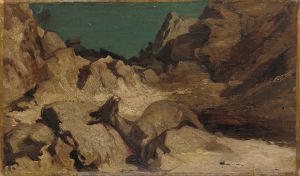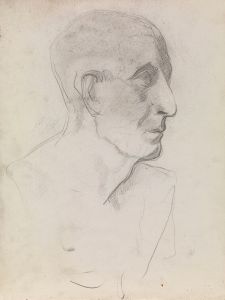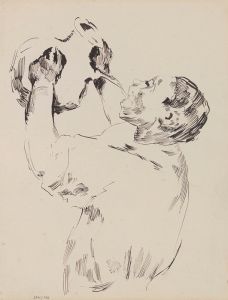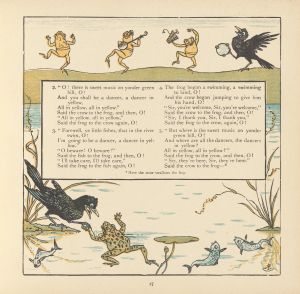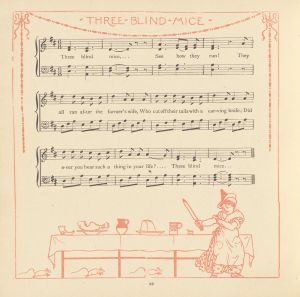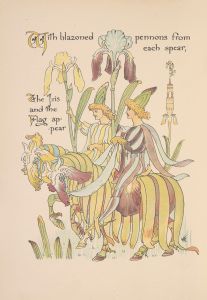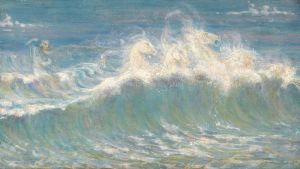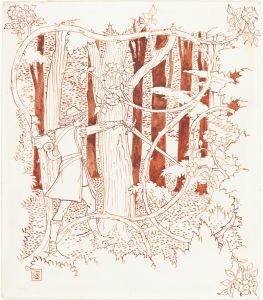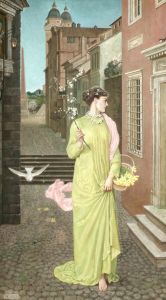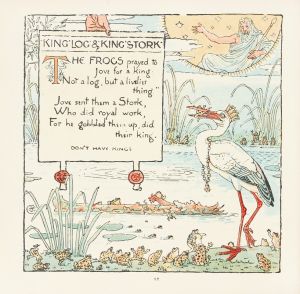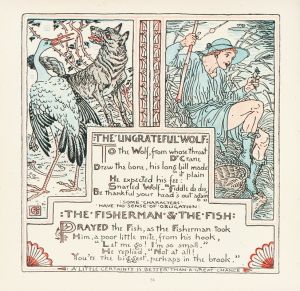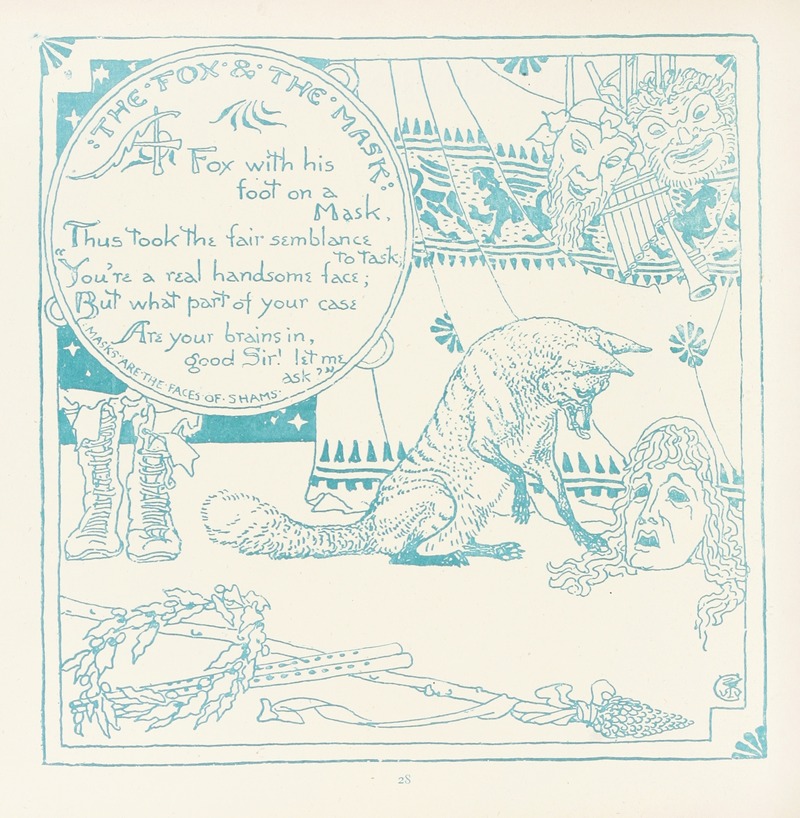
The Fox and the Mask
A hand-painted replica of Walter Crane’s masterpiece The Fox and the Mask, meticulously crafted by professional artists to capture the true essence of the original. Each piece is created with museum-quality canvas and rare mineral pigments, carefully painted by experienced artists with delicate brushstrokes and rich, layered colors to perfectly recreate the texture of the original artwork. Unlike machine-printed reproductions, this hand-painted version brings the painting to life, infused with the artist’s emotions and skill in every stroke. Whether for personal collection or home decoration, it instantly elevates the artistic atmosphere of any space.
"The Fox and the Mask" is an illustration by the renowned English artist and book illustrator Walter Crane. Born on August 15, 1845, Crane was a pivotal figure in the Arts and Crafts Movement and is best known for his contributions to children's literature and his distinctive style that combined elements of Pre-Raphaelite and Art Nouveau aesthetics.
Walter Crane's illustration "The Fox and the Mask" is based on one of Aesop's Fables, a collection of stories attributed to Aesop, a slave and storyteller believed to have lived in ancient Greece between 620 and 564 BCE. Aesop's Fables are characterized by their moral lessons, often conveyed through anthropomorphic animals.
"The Fox and the Mask" tells the story of a fox who discovers a theatrical mask and, upon examining it, remarks on how fine the mask looks but notes that it lacks brains. The moral of the fable is that outward appearances can be deceiving and that true worth lies within.
Crane's illustration captures the essence of this fable with his signature style, which often featured elaborate borders, intricate details, and a harmonious blend of color and form. His work was not just about illustrating the story but also about enhancing the narrative through visual means. Crane's illustrations were known for their clarity, elegance, and the way they engaged young readers, making the moral lessons more accessible and memorable.
Walter Crane's contributions to children's literature were significant during the late 19th and early 20th centuries. He worked extensively with Edmund Evans, a prominent wood engraver and printer, who helped bring Crane's vivid illustrations to life through high-quality color printing. This collaboration resulted in a series of successful children's books that remain influential to this day.
Crane's work on "The Fox and the Mask" is a testament to his ability to convey complex ideas through simple yet powerful imagery. His illustrations often included elements of nature, classical mythology, and medieval romance, reflecting his broad artistic influences and interests.
In addition to his work as an illustrator, Walter Crane was also an accomplished painter and designer. He was deeply involved in the Arts and Crafts Movement, which sought to promote traditional craftsmanship and decorative arts as a response to the industrialization of the 19th century. Crane's commitment to the movement's ideals is evident in the meticulous detail and craftsmanship of his illustrations.
"The Fox and the Mask" remains a notable example of Crane's work, showcasing his talent for bringing timeless stories to life through his art. His illustrations continue to be celebrated for their beauty, creativity, and the way they capture the imagination of readers of all ages.
Walter Crane passed away on March 14, 1915, but his legacy endures through his extensive body of work, which continues to inspire and delight audiences around the world. His contributions to children's literature and illustration have cemented his place as one of the most important figures in the history of book illustration.





